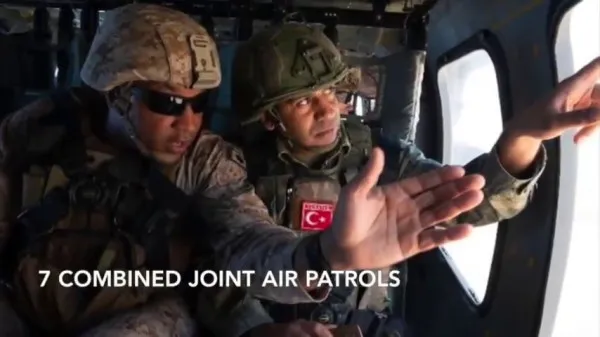

Most of the U.S. troops in Syria are being moved out of the country as Turkish forces and their Arab allies push further into Kurdish territory than originally expected, Task & Purpose has learned.
Roughly 1,000 U.S. troops are withdrawing from Syria, leaving a residual force of between 100 and 150 service members at the Al Tanf garrison, a U.S. official said.
“I spoke with the president last night after discussions with the rest of the national security team and he directed that we begin a deliberate withdrawal of forces from northern Syria,” Defense Secretary Mark Esper said on Sunday’s edition of CBS News’ “Face the Nation.”‘
“It’ll be a deliberate withdrawal and we want to conduct it as- as safely and quickly as possible,” Esper continued. “So we want to make sure we de-conflict a pullback of forces. We want to make sure we don’t leave equipment behind. So I’m not prepared to put a timeline on it, but that’s our general game plan.”
But the “deliberate withdrawal” has snowballed in the past week from the repositioning of roughly 50 U.S. special operators in northeast Syria to bases elsewhere in the country to a near total pull out of U.S. forces from the country.
The outcome is exactly the opposite of what top U.S. officials have been saying would happen since the White House first announced on Oct. 6 that Turkey planned to invade northeast Syria.
“At this time removal of the 50 to 100 U.S. soldiers from the safety zone where the Turks may incur is not the beginning of a formal pullout of Syria,” a senior administration official said on condition of anonymity during an Oct. 7 conference call organized by the White House. “The President has said this on numerous occasions, and the American people want American troops as soon as possible.
“That remains our ultimate goal, is to get American troops from the Middle East and to let the parties in the region determine their own future. But this is not the time for any such move right now. We’re moving 50 troops within Syria.”
The Turkish military and militia fighters with the Free Syrian Army began pushing into Kurdish held northeast Syria on Oct. 9 as part of “Operation Peace Spring.”
Initially, top U.S. military leaders said that troops not in the path of the Turkish invasion were continuing to work with Syrian Democratic Forces to fight the remnants of ISIS.
“We’re still co-located with the SDF, with the exception of the two small outposts that we withdrew forces from in a force protection mode,” Army Gen. Mark Milley, chairman of the Joint Chiefs of Staff, said during an Oct. 11 Pentagon news conference. “We’re asking them to continue their partnership with us and continue their — a lot of it is force protection of our forces and so on.”
At the time, the Turks had advanced roughly 10 kilometers into northeast Syria, said Milley, who called the incursion “relatively limited.”
The United States had made clear to Turkey that it opposed its plans to launch a unilateral military operation into Syria, but when it became clear the Turks were about to do just that, the U.S. military moved a small number of troops out of the way, Esper said at the same news conference.
“We have not abandoned the Kurds,” Esper said. “Let me be clear about that. We have not abandoned them. Nobody green-lighted this operation by Turkey — just the opposite. We pushed back very hard at all levels for the Turks not to commence this operation.”
But the situation appeared to escalate later on Oct. 11 when U.S. troops near Kobane, Syria, came under Turkish artillery fire. No U.S. troops were injured.
On Sunday, Esper said on “Face the Nation” that the president’s decision to withdraw most U.S. troops from Syria came after it became clear the Turks planned to advance further into Syria than originally planned.
Esper also pushed back when asked if the United States had given the Turks tacit approval for the invasion by moving any troops out of the way to begin with.
“We are doing what’s in the interests of our service members not to put them in harm’s way,” Esper said. “Not to put 20, 30, 40 soldiers up against a 15,000 man army which is using airstrikes, artillery, and ground forces to prosecute a war against the Turks whose roots go back over 200 years.”
UPDATE: This story was updated on Oct. 13 after a U.S. official confirmed that between 100 and 150 service members will stay in Syria.